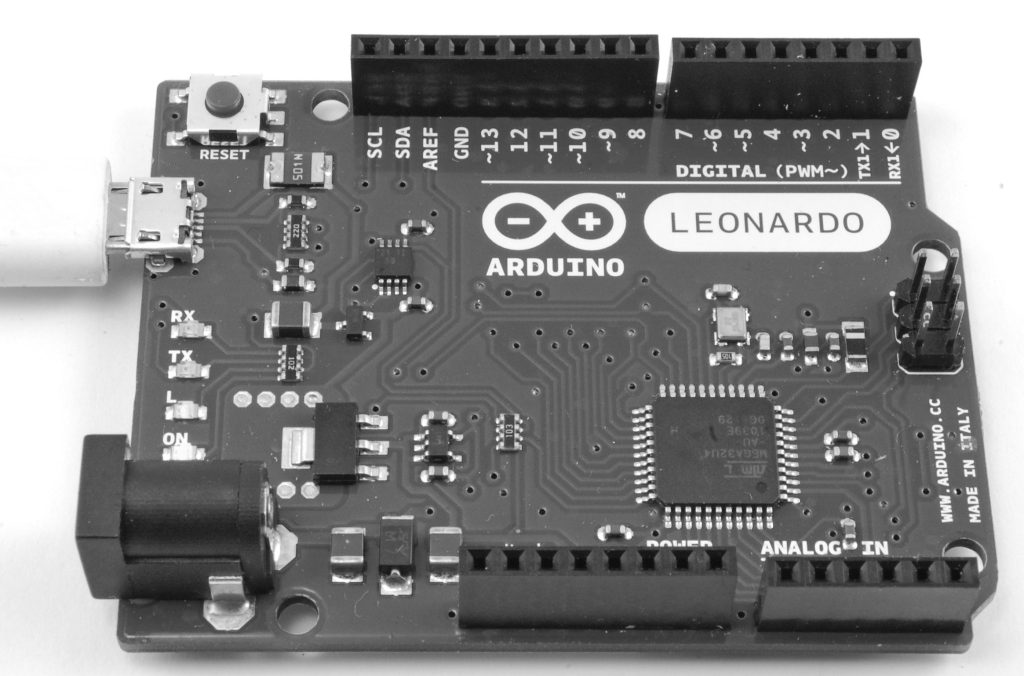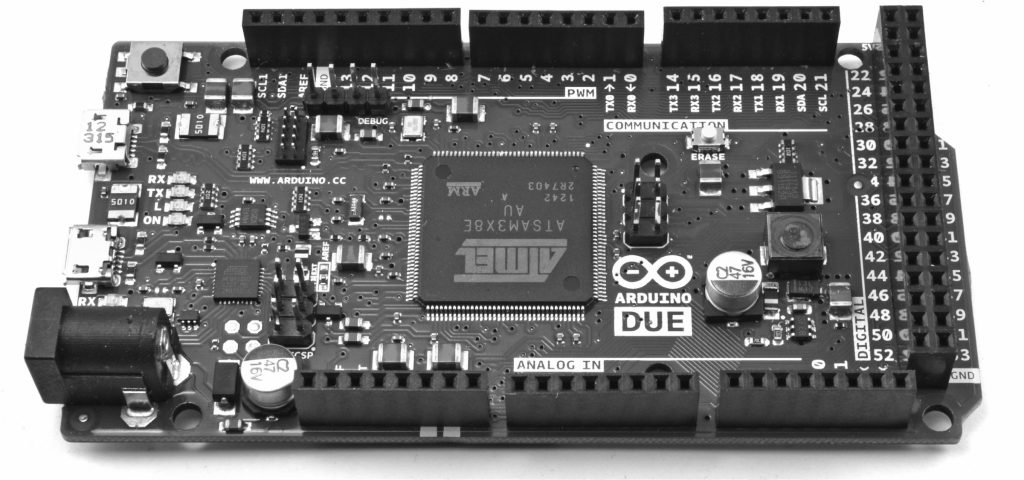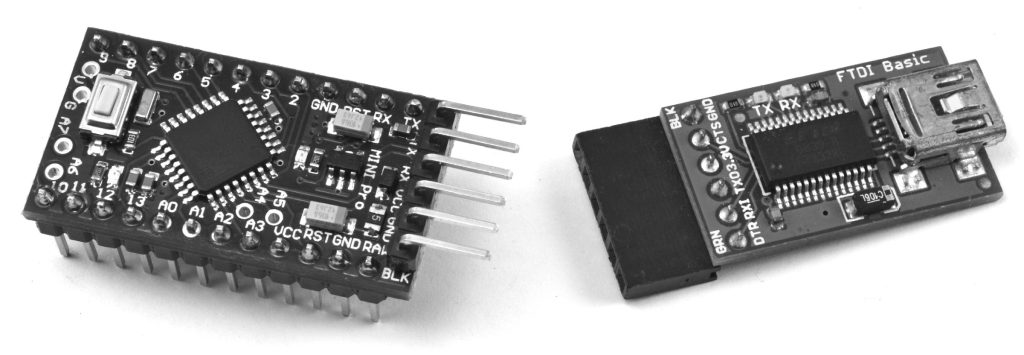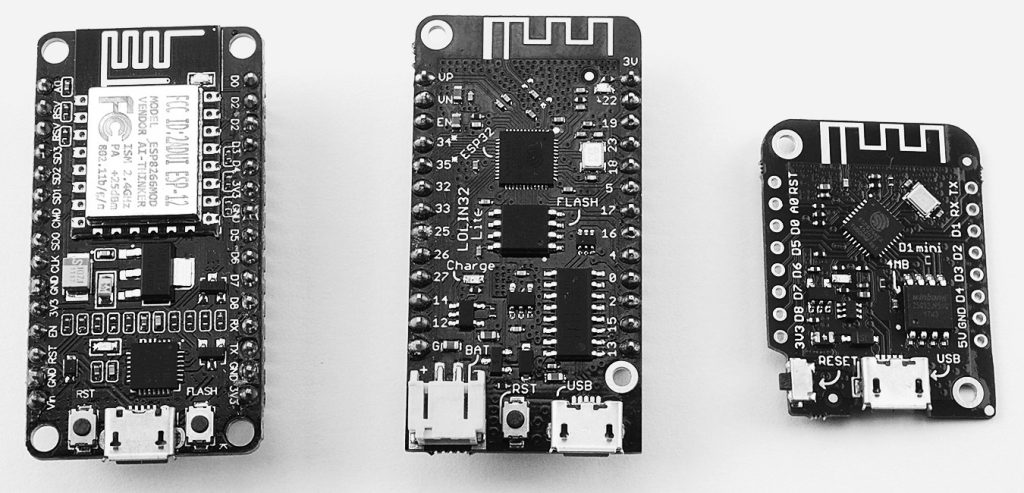The Arduino Uno is the current incarnation of the original Arduino board. It is the most common Arduino board and is generally what people mean when they say they are using an Arduino. The other types of Arduino board all satisfy special requirements, like the need for more I/O (input/output) connections, faster performance, or a smaller board, or to be stitched into clothing or integrate easily with the Internet and so on.
No matter how different the hardware, each board is programmed from the Arduino IDE, with only minor variations in the software features they can use. Once you have learned how to use one Arduino Board, you have pretty much learned how to use all of them. Let’s look at the current range of official Arduino boards. There are other Arduinos than the ones discussed here, but they tend not to be that popular. For a full list of boards, check out the official Arduino website (www.arduino.cc).
Uno and Similar
The Uno R3 is the latest of a series of “standard” boards that include the plain Uno, Duemilanove, Diecimila, and NG. These boards all use the ATmega168 or ATmega328 microprocessors, which are pretty much the same, apart from differing amounts of memory.

Another current Arduino, with the same size and connections as the Uno R3, is the Arduino Leonardo. As you can see, the board is much more sparsely populated than the Uno. This is because it uses a different processor. The Leonardo uses the ATmega32u4, which is similar to the ATmega328 but includes a built-in USB interface, removing the need for the extra components that you find on the Uno.
Moreover, the Leonardo has slightly more memory, more analog inputs, and other benefits. It is also less expensive than the Uno. In many respects, it is also a better design than the Uno. If this is the case, then you might be wondering why the Leonardo is not the most popular Arduino board, rather than the Uno. The reason is that the improvements offered by the Leonardo come at the cost of making it slightly incompatible with the Uno and its predecessors. Some expansion shields (especially old designs) will not work on the Leonardo. In time, these differences will become less of a problem. At that point, it will be interesting to see if the Leonardo and its successors become the more popular boards.
The Arduino m0 is a relatively new addition to the Arduino stable. It uses a modern Arm m0 processor but has the same layout of pins as the Arduino Uno. However, it operates at 3.3V rather than the 5V of the Arduino Uno and can only supply 7mA from its GPIO pins.
Big Arduino Boards
Sometimes an Uno just doesn’t have enough I/O pins for the application that you intend to use it for. The choice then arises of either using hardware expansion for the Uno or switching to a bigger board.
TIP: If you are coming to Arduino for the first time, do not buy one of these larger boards. It is tempting because they are bigger and faster, but they have shield compatibility problems and you will be much better off with a “standard” Uno.
The super-sized Arduinos have the same sockets as an Uno, but then they add a double row of extra I/O pins on the end and a longer length of pins along the side. Traditionally, the “bigger” board would be an Arduino Mega 2560. These boards, in common with all the larger Arduino boards, have more of every kind of memory. The Mega 2560 and Mega ADK both use processors with similar power to the Arduino Uno. However, the Arduino Due is an altogether more powerful beast. This power comes in the form of a 84 MHz processor (compared with the Uno’s 16 MHz) but at the cost of further compatibility problems. The biggest of these is that the Due operates at 3.3V rather than the 5V of most previous Arduinos. Not surprisingly, this means that many Arduino shields are incompatible with it.

For the most demanding projects, however, the Due board has many advantages:
- Lots of memory for programming and data
- Hardware music output capabilities (hardware digital to analog converters)
- Four serial ports
- Two USB ports
- USB host and OTG interfaces
- USB keyboard and mouse emulation
Small Arduino Boards
Just as the Uno is too small for some projects, it can also be too big for others. Although Arduino boards are low cost, it gets expensive if you start leaving one embedded in every project you make. There are a range of smaller and “pro” Arduino boards, designed either to be physically smaller than a regular Uno or to keep costs down by omitting features not required in most projects.
These boards do not have a USB interface; rather, you need a separate adaptor module to program them. As well as the Mini, there are also Nanos and Micros, both of which have built-in USB but cost more.

Unofficial Arduinos
As well as the “official” boards just described, there are also many unofficial copies and variations on the Arduino hardware, given its open source status. Straight Arduino clones are easy to come by on eBay and other low-cost outlets and are simply copies of the Arduino designs. They are only really of interest because of their price. But beware—to keep their costs so low they generally use different USB interface chips, which can mean some driver wrangling, especially if you are a Windows user. Some of the most interesting and useful of the Arduino compatibles are based on the ESP family of WiFi system on a chip microcontrollers. These are great boards for Internet of Things projects. Now that you have a bit more information about the hardware side of an Arduino, we can turn to programming it.
